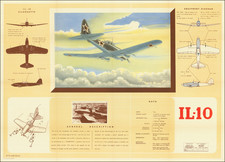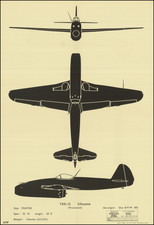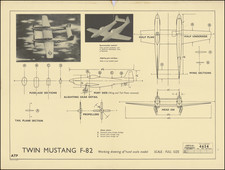Banshee F2H-1, a detailed diagrammatic poster prepared by the Ministry of Supply in March 1950, elucidates the specifications and design of the Banshee F2H-1 aircraft. This document, intended for promulgation by key military and government departments such as the Admiralty, War Office, and Air Ministry, is a precise representation of the aircraft.
The 1950s marked a pivotal period in aeronautical design and engineering. Post World War II, there was a surge in technological innovations in aviation, fueled by experiences from the war and the ongoing Cold War tensions. Military aircraft designs were often top-secret and a matter of national security.
The F2H Banshee was a jet fighter aircraft developed by the McDonnell Aircraft Corporation in the post-World War II era. Serving primarily with the United States Navy and the Royal Canadian Navy during the early stages of the Cold War, the Banshee was renowned for its robust design and adaptability. Characterized by its twin jet engines and straight wing design, the aircraft was deployed both on carriers and on land, playing pivotal roles in various missions during the Korean War. Its significance lies not just in its combat role, but also in its contribution to the rapid advancements in jet-powered aviation during the mid-20th century.
The diagram delineates the different sections of the aircraft, including tail plane sections, fuselage, wings, and alighting gear. Such blueprints were instrumental in understanding the aircraft's design, its components, and their intricate relationships. Each section, from the "Datum planes" to the "Underside Plan," offers a glimpse into the aircraft's geometry, providing critical insights for those engaged in its construction, maintenance, or modification.
Furthermore, the diagram provides explicit recommendations for construction materials. For instance, it advises the use of grammed hardwood varieties such as American Whitewood, Lime, or Basswood for specific components. Similarly, for the alighting gear and flaps, the use of brass or any suitable metal is recommended. Such specifications were certainly intended for the production of scale models of the aircraft.









![[ Bombing Kansas City, Missouri ] USAF Target Complex Chart Series 100 Restricted](https://storage.googleapis.com/raremaps/img/small/97394.jpg)

![(Cold War U.S. Aircraft Identification) Thunderjet P-84 [Thunderjet F-84]](https://storage.googleapis.com/raremaps/img/small/96742.jpg)


